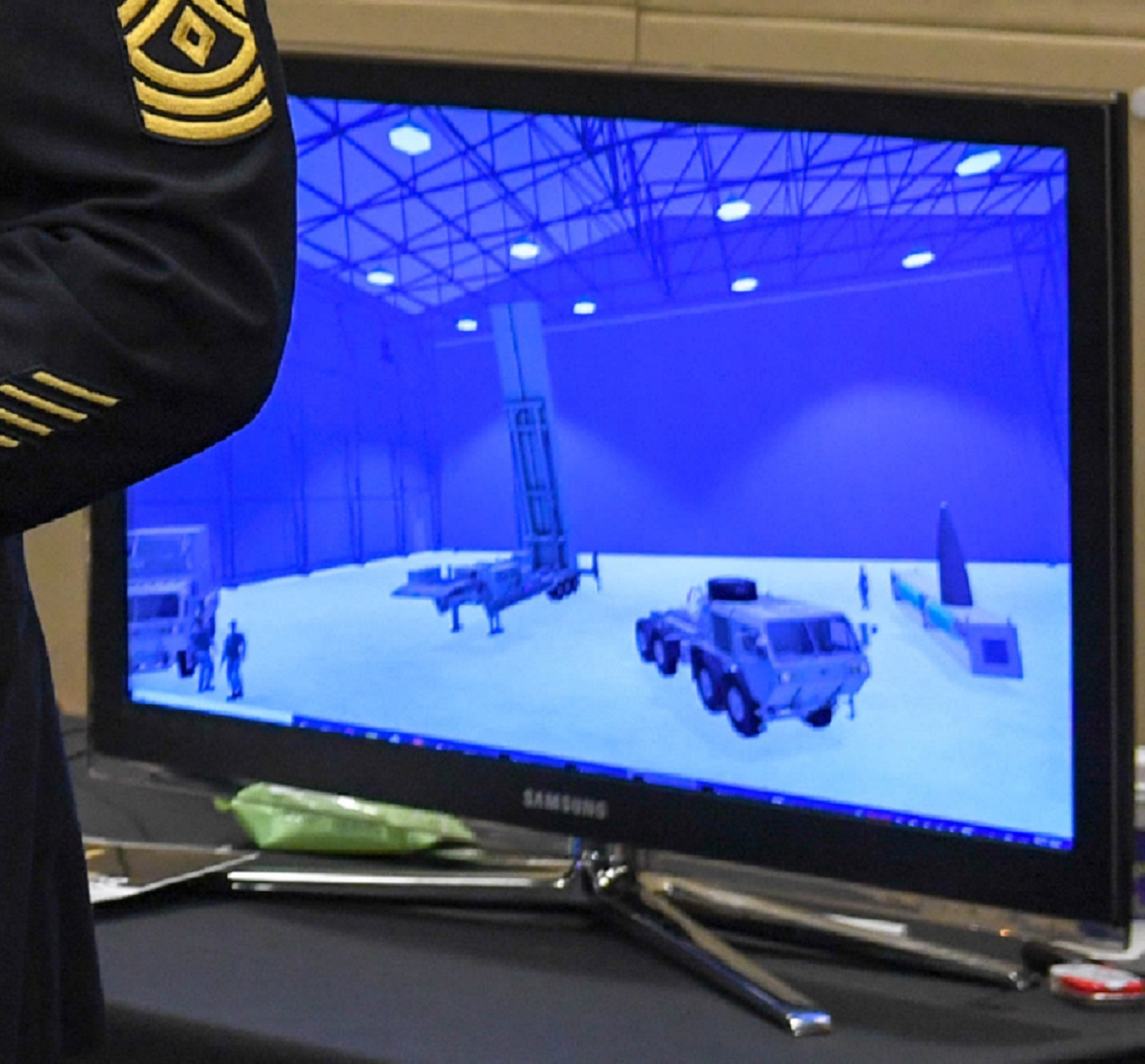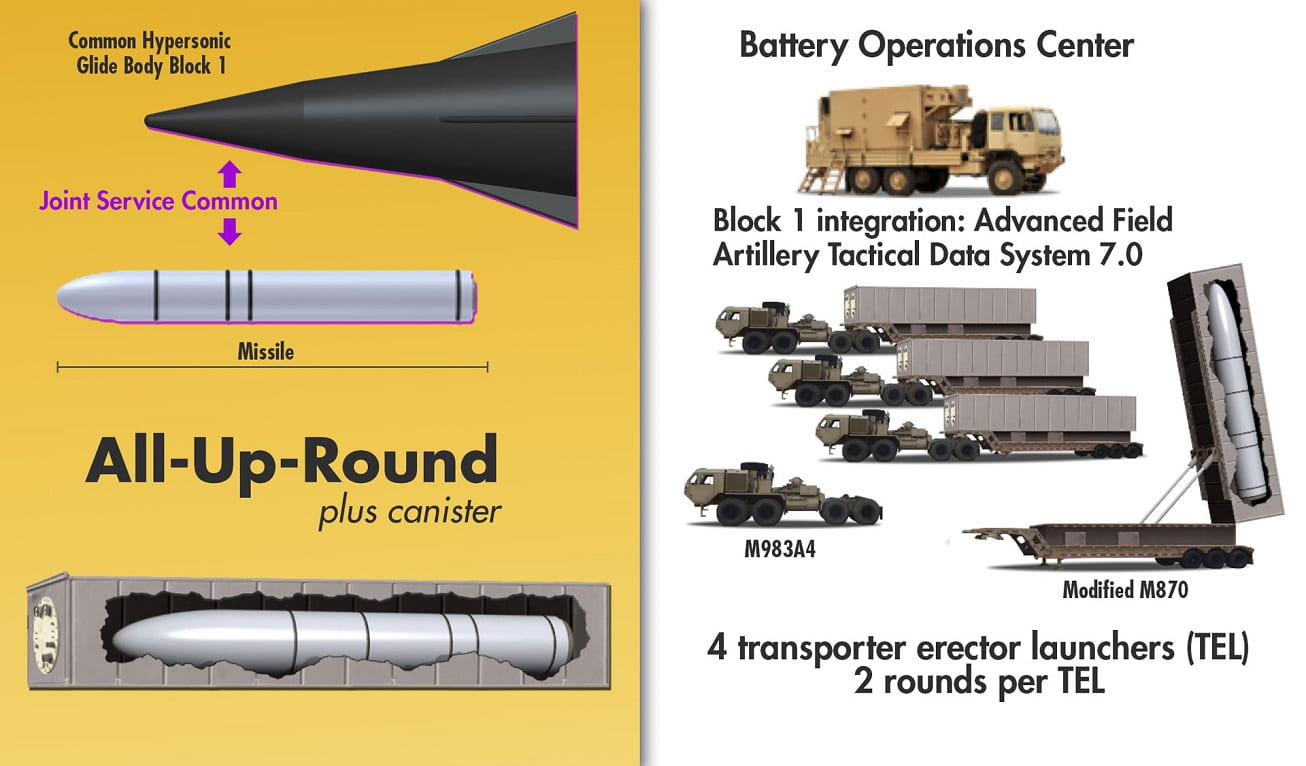U.S. Army displays model of new hypersonic weapon
Posted on
The U.S. Army recently displayed a model of what it is calling a Long Range Hypersonic Weapon (LRHW).
The model of a new weapon system was unveiled during the House Army Caucus Breakfast at the Rayburn House Office Building in Washington D.C., Feb 27, 2020.
The Army’s LRHW will introduce a new class of ultrafast, maneuverable, long-range missiles that will launch from mobile ground platforms. Hypersonic weapons are capable of flying at five times the speed of sound and operate at varying altitudes, making them unique from other missiles with a ballistic trajectory.
The U.S. Army is aiming to get the first long-range hypersonic weapon experimental prototype by the fiscal year 2023. The new land-based, truck-launched system should be armed with hypersonic missiles that can travel well over 3,800 miles per hour.
The new weapon system will provide a critical strategic weapon and a powerful deterrent against adversary capabilities for the U.S. Army. Hypersonic missiles can reach the top of the Earth’s atmosphere and remain just beyond the range of air and missile defense systems until they are ready to strike, and by then it’s too late to react. Extremely accurate, ultrafast, maneuverable and survivable, hypersonics can strike anywhere in the world within minutes.

In March 2019, the Secretary and Chief of Staff of the Army directed the accelerated delivery of a prototype ground-launched hypersonic weapon with residual combat capability by Fiscal Year (FY) 2023. To execute this strategy, the Army Rapid Capabilities and Critical Technologies Office (RCCTO) has selected two prime contractors to build and integrate components of the LRHW prototype.
On August 29, the Army awarded an Other Transaction Authority (OTA) agreement to Dynetics in the amount of $351.6 million to produce the first commercially manufactured set of prototype Common-Hypersonic Glide Body (C-HGB) systems. Also on August 29, the Army awarded a second OTA agreement to Lockheed Martin in the amount of $347.0 million as the LRHW prototype system integrator.

The Army RCCTO is responsible for delivering the prototype LRHW battery, consisting of four trucks with launchers, hypersonic missile rounds, and a command and control system. The OTA awards support the design, integration and production work that enables a series of flight tests beginning next year, leading to fielding in FY23.
In developing the LRHW, the Army is working in close collaboration with the other services through a Joint Service Memorandum of Agreement on hypersonics design, development, testing and production. As part of the agreement, the Army will execute production of the C-HGB for all services, while the Navy will lead the glide body design beginning in FY20. This joint cooperation allows the services to leverage technologies, while tailoring them to meet specific air, land and sea requirements.
The two contract awards mark an important step in transitioning the development of Army hypersonic capabilities out of the government laboratories and into commercial production. Initially, Dynetics will work with Sandia National Laboratories to learn build of the glide body.
Land-Based Hypersonic Missile (also known as the Long Range Hypersonic Weapon (LRHW)) pic.twitter.com/w4kluJbGQE
— 笑脸男人 (@lfx160219) February 28, 2020
Subscribe to our newsletter
Promotions, new products and sales. Directly to your inbox.
